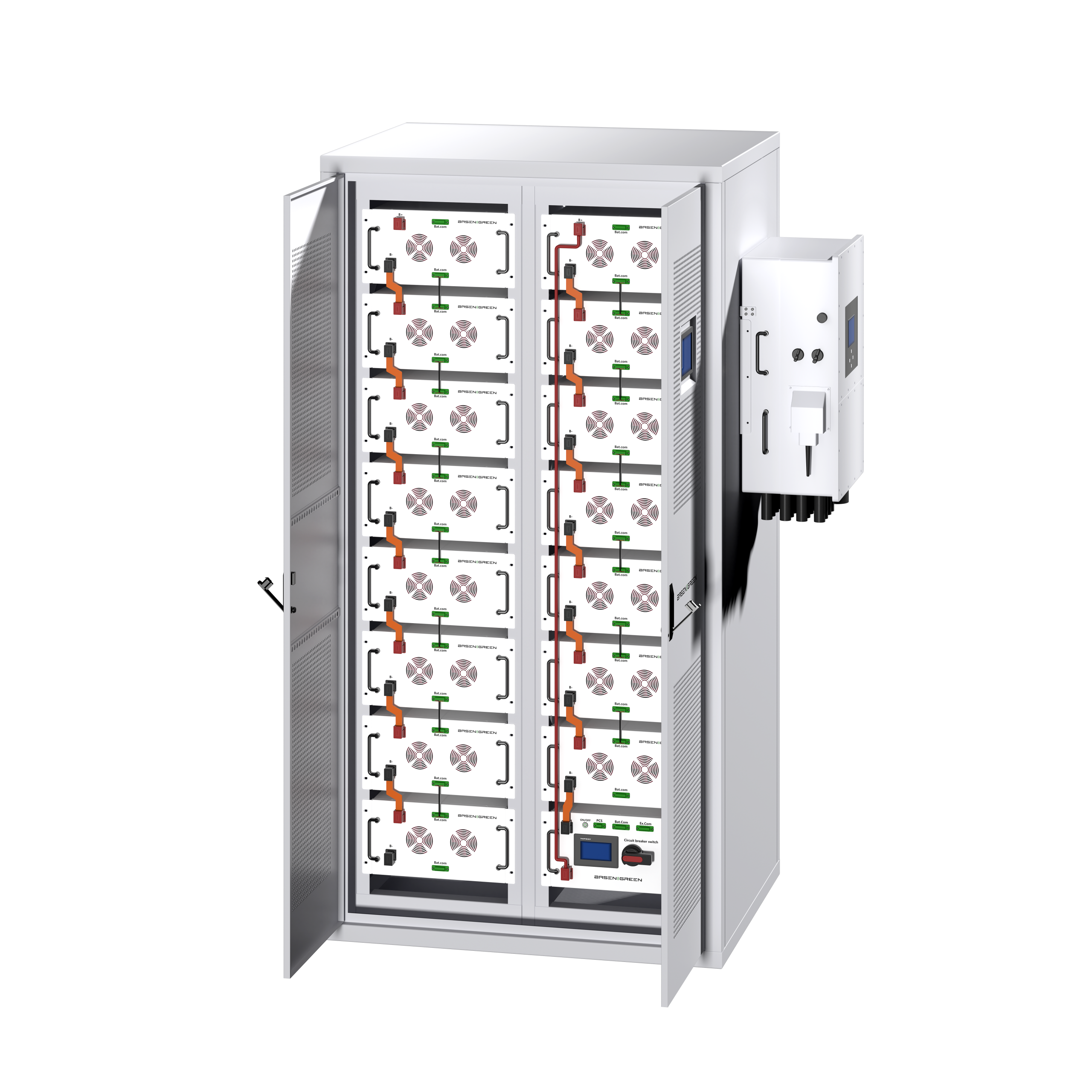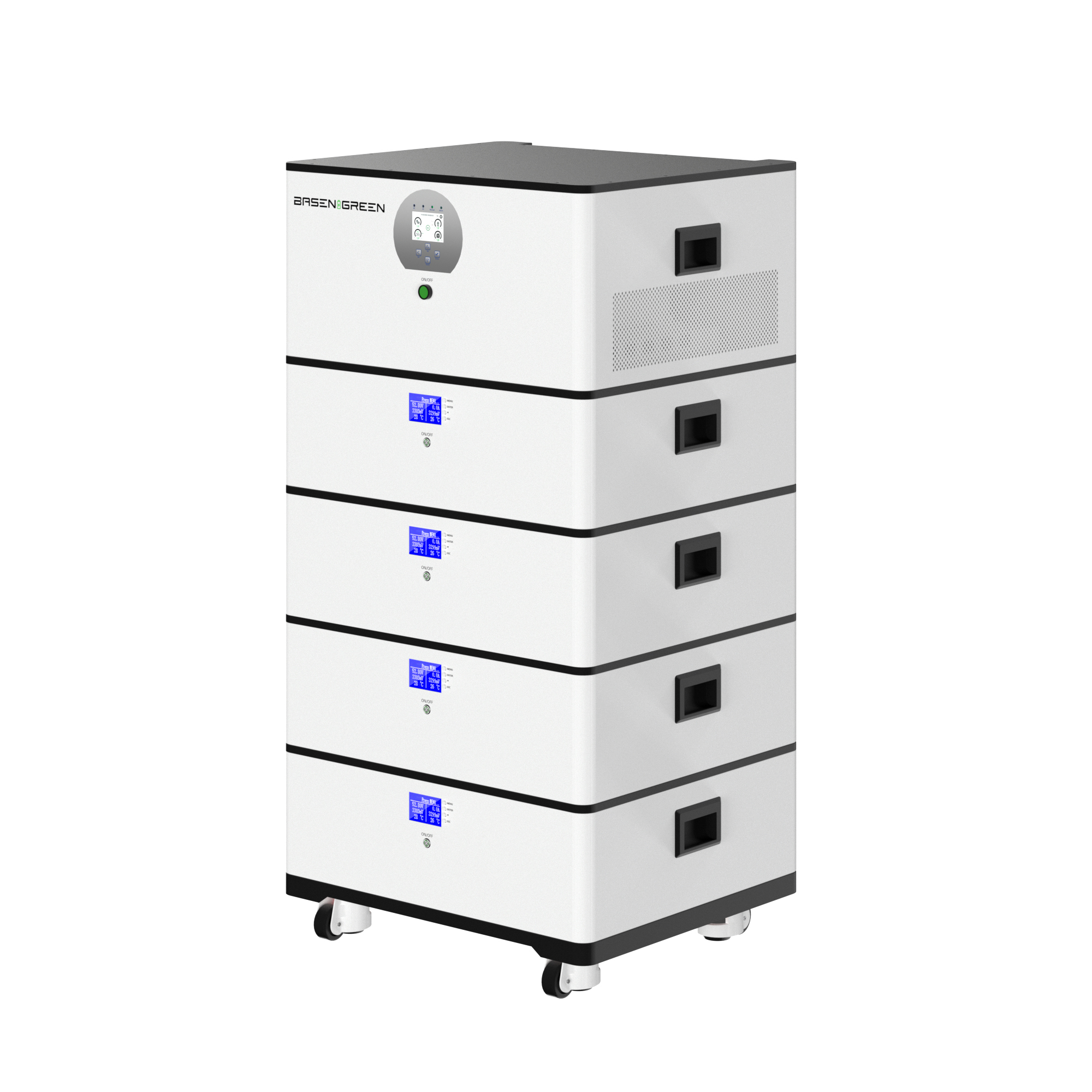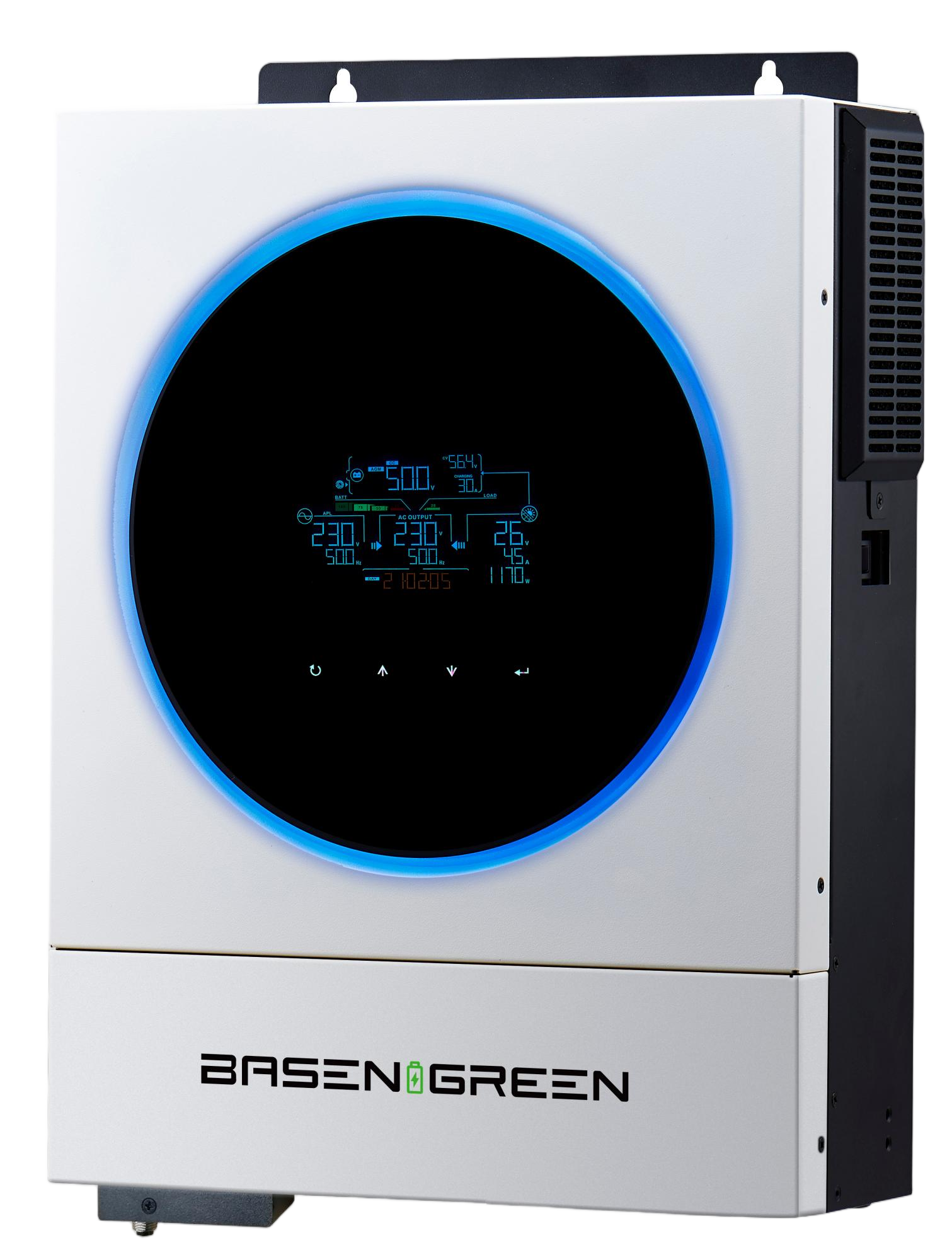On May 6, 2025, the much-anticipated 3rd German Photovoltaic and Energy Storage Conference was held as scheduled in Germany. The conference attracted experts, business representatives, investors and policy makers from the global PV and energy storage industry to gather together and carry out in-depth exchanges around cutting-edge technologies, business models and policy environment.
Against the backdrop of continuous changes in the global energy landscape, the 3rd German Photovoltaic and Energy Storage Conference provides a practical platform for PV and energy storage companies to “look at the trend, find the direction, and talk about cooperation” with the keywords of connection, dialog and action.
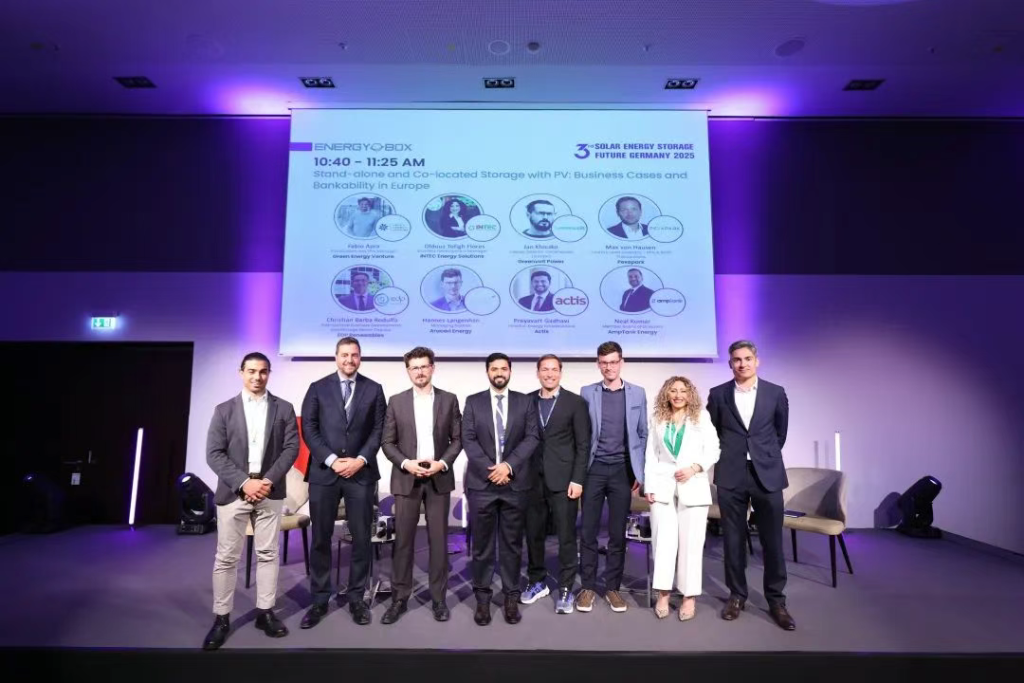
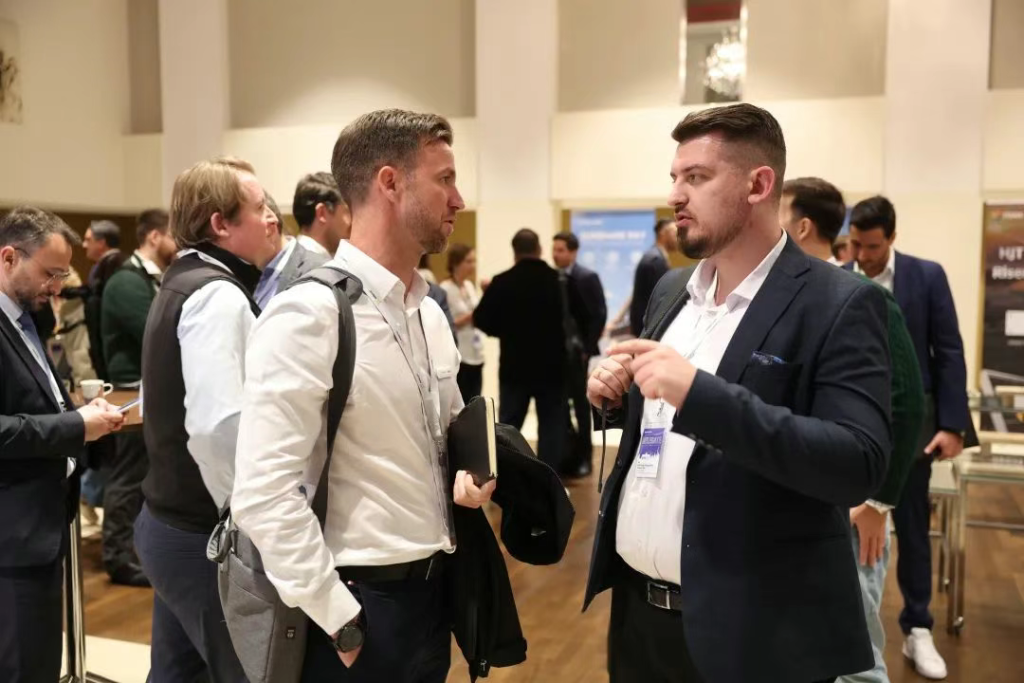
Opening remarks1
The first speaker of the conference, Dr. Andreas Hauer, member of the board of directors of the German Association for Energy Storage (BVES), shared his views on “The central role of flexibility in the future energy system”, pointing out that as the share of renewable energies increases, the energy system will face more complex challenges in terms of matching time, space and energy form.
Dr. Andreas Hauer pointed out that as the share of renewable energies increases, energy systems will face more complex matching challenges and will need to be flexible in terms of time, space, and energy form, and that Dr. Hauer systematically reviewed the coupling paths of different types of energy storage technologies in the fields of electricity, heat, and transportation, and demonstrated the “Flexible Sector Coupling” (FSC) through a number of European case studies. Through a number of European cases, Dr. Auer demonstrated how “Flexible Sector Coupling” can promote cross-sector synergies between electricity, heat and hydrogen. He emphasized that energy storage should not be seen as a stand-alone technology, but rather as a key link in the future decarbonization of the industry.
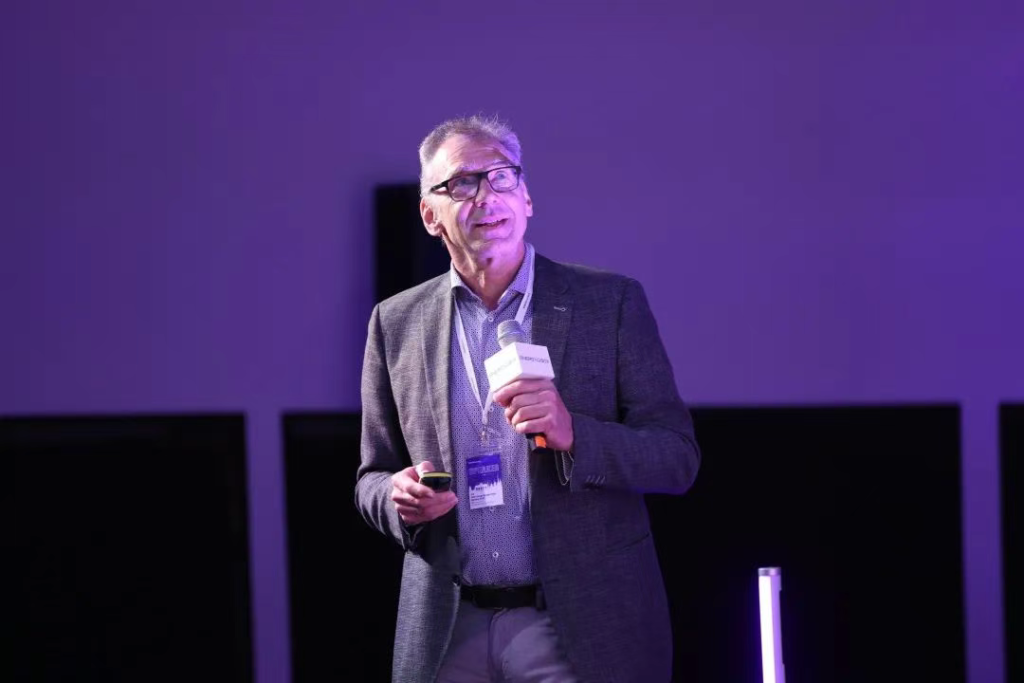
Opening remarks2
The second guest of the opening speech, Nikola Gazdov, President of the Bulgarian Association of Renewable Energy and Energy Storage (APSTE), gave an in-depth analysis of the European energy storage market trends and strategic transformation path.
He emphasized that Europe’s energy storage is in a critical period of both policy-driven and price mechanism changes, and that with the increasing volatility of electricity prices and the growing popularity of Power Purchase Agreements (PPAs), energy storage has become an infrastructure that supports the flexibility and stability of the energy market. Gazdov pointed out that the continued expansion of solar energy is accelerating the phenomenon of “revenue cannibalization”, and that only through the coordinated deployment of light storage can we effectively address the challenges of peak and valley differentials and the frequency of price zeroing.
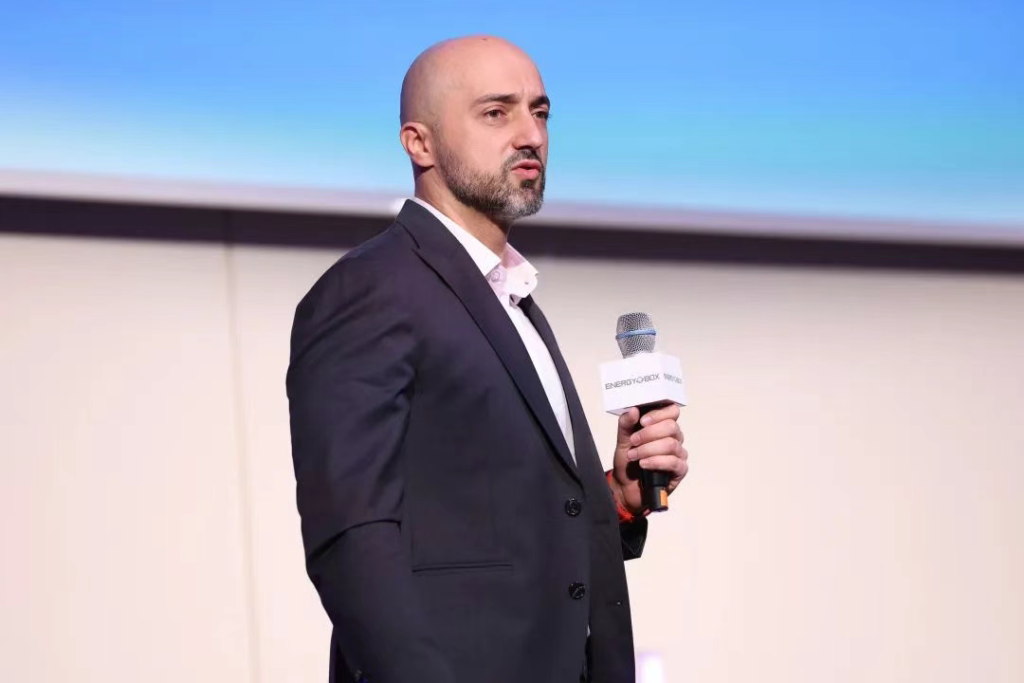
Round-table discussion 1
The first roundtable discussion centered on “Curbing Electricity Price Volatility through PPA and CfD Mechanisms”, focusing on the practical experiences and institutional challenges in promoting fixed tariff mechanisms in major European markets (Germany, the Netherlands, Eastern Europe and the Balkan countries). Experts from Germany, Hungary and Bulgaria, as well as representatives of development companies, firstly explained the essential differences between PPAs (Power Purchase Agreements) and CfDs (Contracts for Difference) in terms of different market structures, risk allocation and financing adaptation.
The discussion pointed out that Germany and the Netherlands are in the process of transitioning from traditional subsidy mechanisms to bilateral CfDs, and are considering the introduction of a better “price floor + guarantee support” system to stimulate the demand for PPAs, while the Eastern European and Balkan markets are still in the early stages of exploring the PPA market due to unstable policies and weak credit mechanisms, and are in urgent need of standardized terms and risk mitigation tools to facilitate the development of PPAs. PPA markets in Eastern Europe and the Balkans are still in the early stages of exploration due to policy stability and weak credit facilities, and are in dire need of standardized terms and risk mitigation tools.
In particular, the panelists emphasized that the frequent occurrence of “negative tariffs” is continuing to impact the existing PPA structure, and future contract design must pay more attention to flexibility and energy storage capacity. At the same time, the forum also proposed to support the development of cross-border PPAs and hybrid photovoltaic storage projects to enhance revenue stability and financeability. Despite the slow progress of PPA standardization in various countries, the speakers agreed that promoting the “trinity” path of policy guidance, market education and bank recognition is the key to realizing large-scale corporate renewable energy procurement.
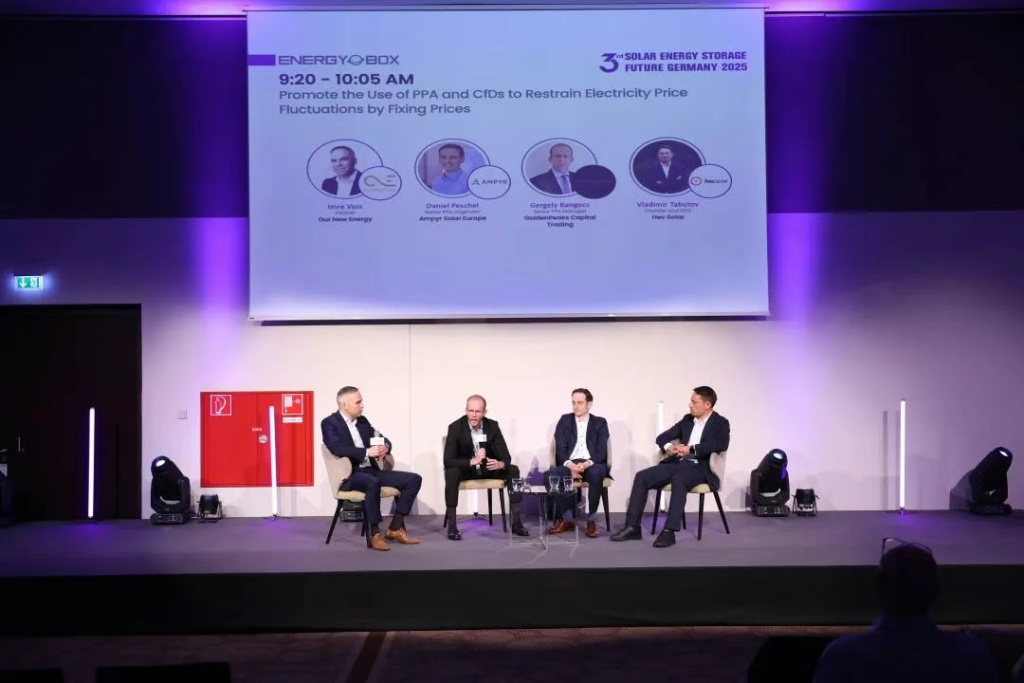
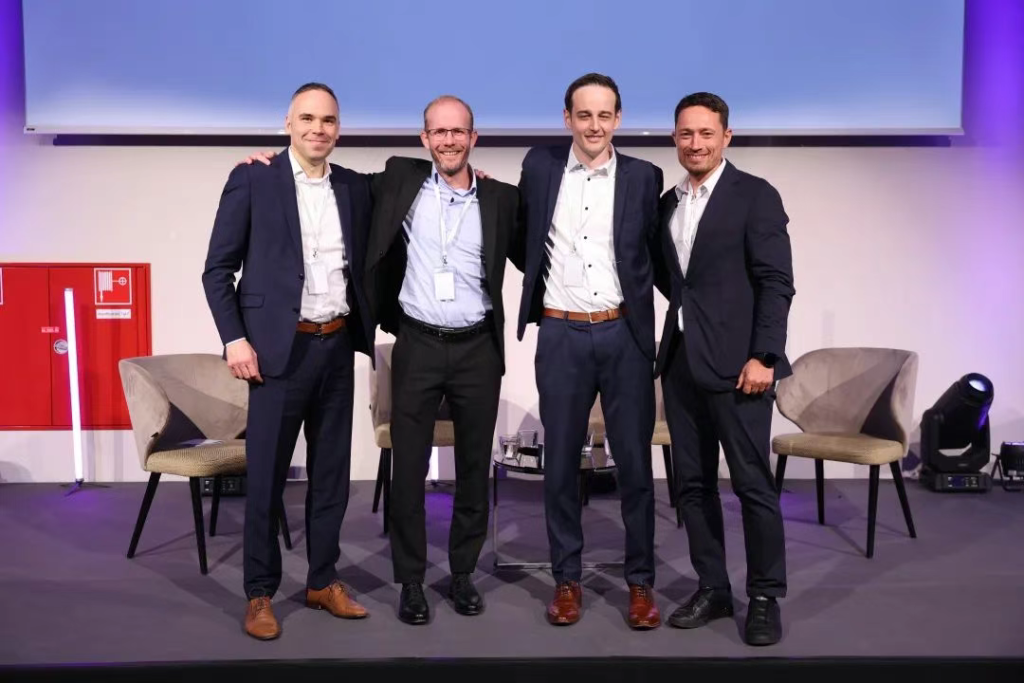
Round-table discussion 2
The second set of roundtable discussion, themed “Business Models and Financability of Standalone and Combined PV and Storage Projects in Europe”, focused on the rapid evolution of the market’s positioning and financing logic for energy storage projects. Developers, investors and financing experts from Germany, UK, Poland, Spain and other countries discussed “Is stand-alone PV losing its attractiveness”, “Changes in energy storage financing in the last 12 months”, “Investors’ core concerns and future trends”. Core Investor Concerns and Future Trends”.
On the topic of “whether standalone PV has become obsolete”, many guests pointed out that PV projects with a single revenue from electricity sales have become significantly more difficult to finance against the backdrop of the current high volatility of electricity prices and the frequent occurrence of negative tariffs. In contrast, the light storage joint project has the ability to regulate, revenue structure is more complex, is gradually obtaining the favor of banks and off-taker. Project experience in Germany and Spain shows that PPA projects with real long-term value often have built-in energy storage strategies or have energy storage expansion potential.
When talking about the trend of energy storage financing, the forum pointed out that over the past year, energy storage has changed from an “optional configuration” to a “key variable”, but at the same time, it has also exposed the problems of inconsistency in valuation methodology and immaturity in revenue modeling. Representatives of developers bluntly said that in the influx of energy storage projects, the quality of the project and the ability to execute have become more important than the “installed capacity”. Banks pointed out that there are still only a few energy storage projects with real “financial comprehensibility”, and that the feasibility of financing will be determined by the verifiability of hybrid revenue models (FM, arbitrage, peak/valley management, etc.).
In terms of market trends around 2025, the panelists agreed that investors will be more interested in whether projects have hybrid revenue structures, the ability to cope with power market uncertainty, and whether financing efficiency can be improved through standardized structures. In particular, the new models of “synergistic development of energy storage and PV” and “cross-border PPA + storage arbitrage” are forming a clearer path.
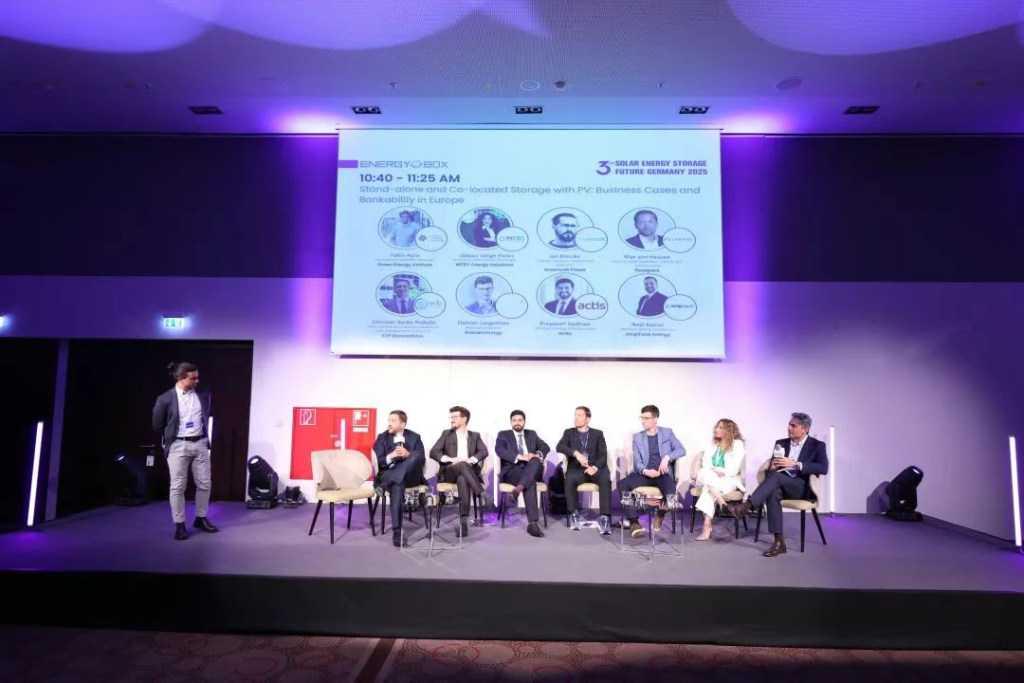
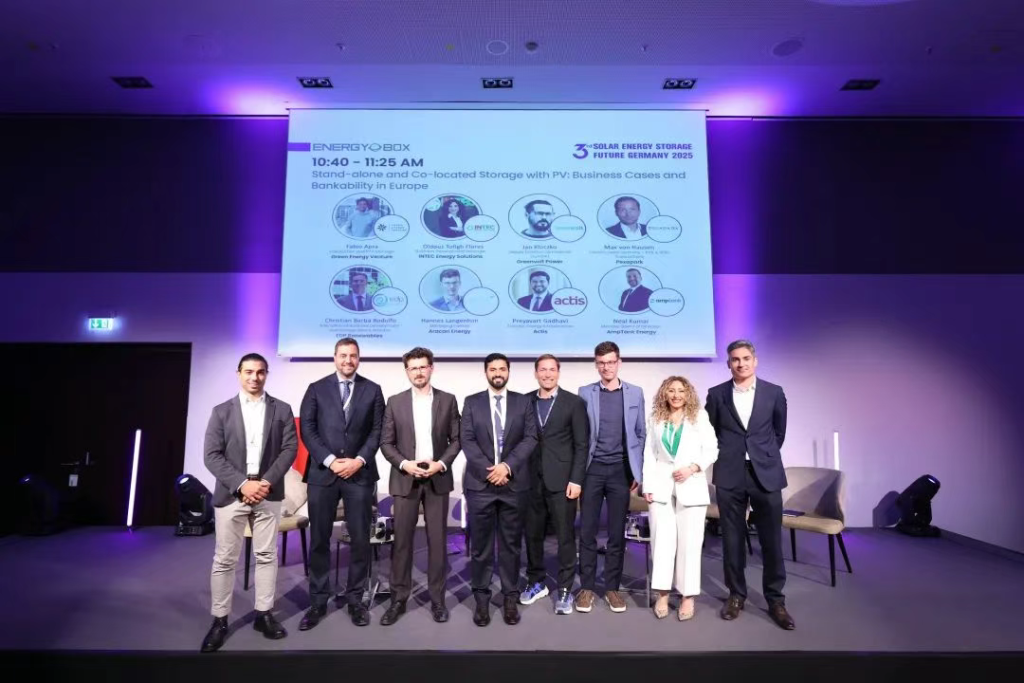
Round-table discussion 3
The third roundtable focuses on “How to revitalize the local PV and energy storage manufacturing industry in Europe”, facing the realities of the survival and development of manufacturing enterprises in Europe. Participants pointed out that high energy consumption, high labor cost, policy barriers and high dependence on global supply chain are the main obstacles limiting the improvement of European local manufacturing capacity. At the same time, China’s production capacity advantage and the intensification of global competition have forced the European manufacturing industry to redefine its value positioning.
Many guests from manufacturing, industrial policy and upstream and downstream of the industry chain agreed that in order to realize the “return” of European manufacturing, it is necessary to transform from subsidy dependence to systematic capacity building. This not only includes the continuity of manufacturing subsidies, green procurement incentives and tax breaks and other policy escort, but also to promote from “assembly manufacturing” to “full chain manufacturing”, from single product competition to “solution-oriented The industrial ecological reconstruction of “solution-oriented”.
Technology, artificial intelligence and automation is considered to be the key path to reduce manufacturing costs and narrow the gap with Asia. At the same time, the guests particularly emphasized that the synergistic ability of the industrial chain is the real barrier that determines the competitiveness of European manufacturing. How to realize the localization of upstream raw material and core supply, the scale breakthrough of midstream production process, and the closed-loop collaboration of downstream EPC and operation and maintenance efficiency are the keys to build the integrated capability of “manufacturing-system-service”.
Education and skill building are also mentioned as long-term moats. Without local engineers and skilled energy technicians, there will be no real manufacturing renaissance.
The discussion provided a clear link between industrial realities and transformation paths, and provided a concrete direction for “how to get out of the predicament of European manufacturing”: not simply copying the Chinese model, but developing a new manufacturing system that suits the logic of its own market and can be integrated into the regional strategy.
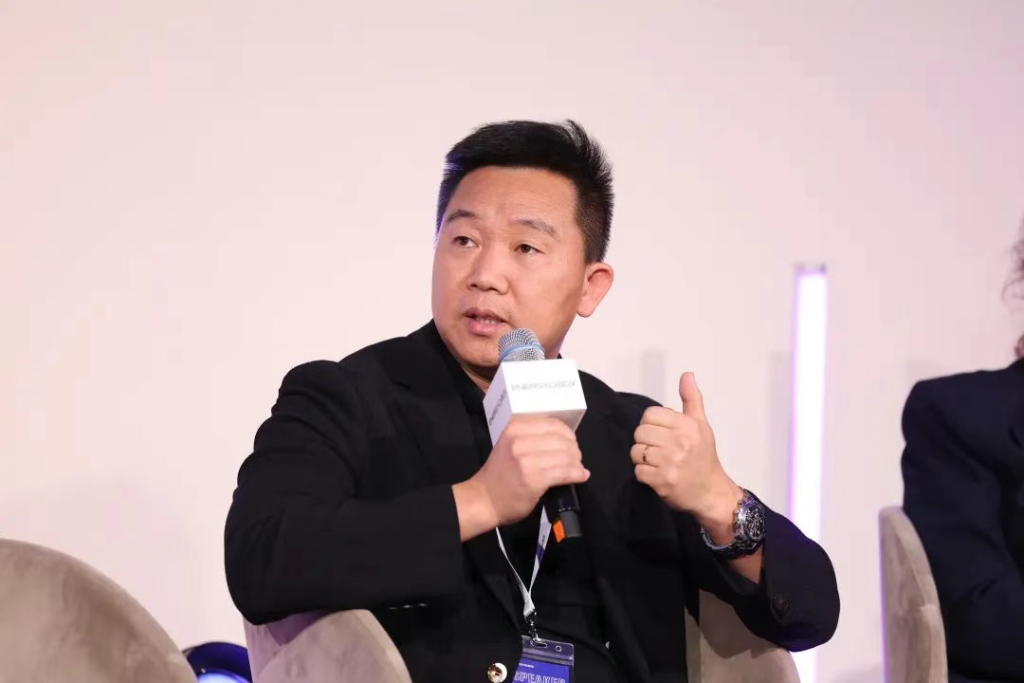
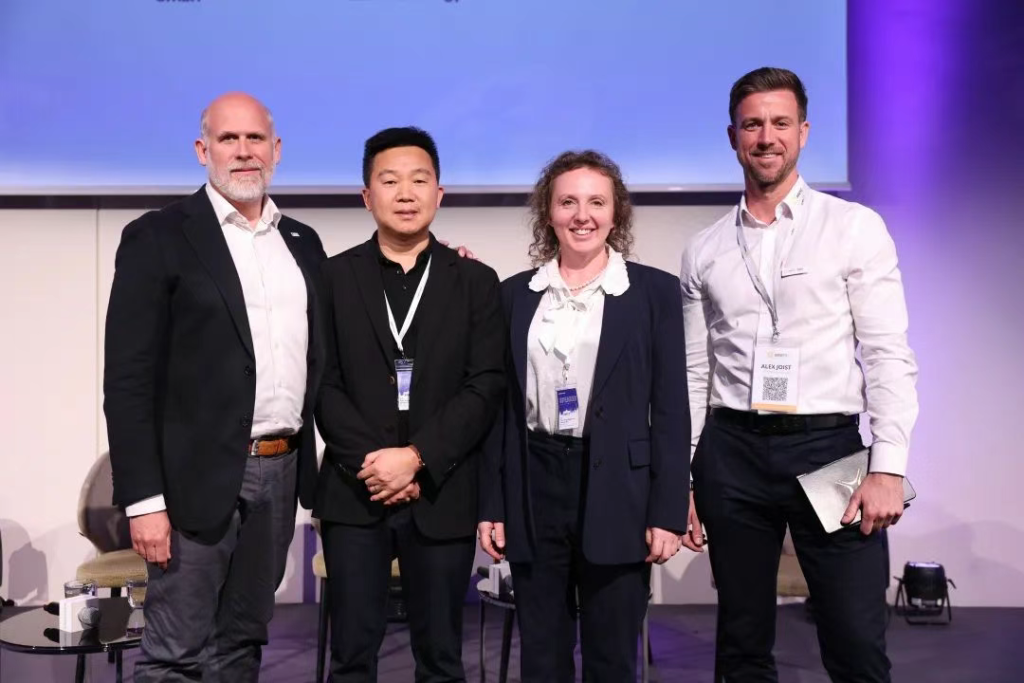
Round-table discussion 4
With the theme of “Focusing on Investors’ Latest Focus on Renewable Energy and Energy Storage”, the fourth roundtable discussed the key factors driving the continuous capital influx in the field of photovoltaic and energy storage, the investment opportunities with regional differentiation, as well as the current challenges and strategies to deal with them.
Several guests from asset management, development finance and long-term investment institutions pointed out that policy drivers, technology cost reduction and traditional energy fluctuations have jointly catalyzed the investment boom in green assets. Especially in the context of accelerating carbon neutrality targets, energy storage projects are shifting from a “supporting role” to a “core allocation” and becoming a key part of investment portfolios.
It was mentioned that Germany remains one of the main investment markets, while South East European countries such as Romania, Serbia and Poland are receiving more and more attention due to their growth potential and cost advantages, while mature markets such as Spain and Italy are facing pressure on returns and competition from project homogenization. In terms of energy storage investment trends, participants generally agreed that it is difficult to meet the expectation of future revenue stability for separate generation assets, and that mixed-income paths such as “combination of optical storage,” “storage arbitrage,” “capacity market participation,” and so on, are becoming increasingly popular. “and other mixed income path is reshaping the asset valuation logic. However, bank financing for energy storage is still facing real challenges such as immature modeling and insufficient policy support.
In the face of the rapid evolution of the market, guests called for: green energy investment should move from the traditional infrastructure logic to a new stage of more flexible, technology-oriented and financial innovation in parallel, and energy storage will undoubtedly become a highly focused core direction of the capital market in the next five years.

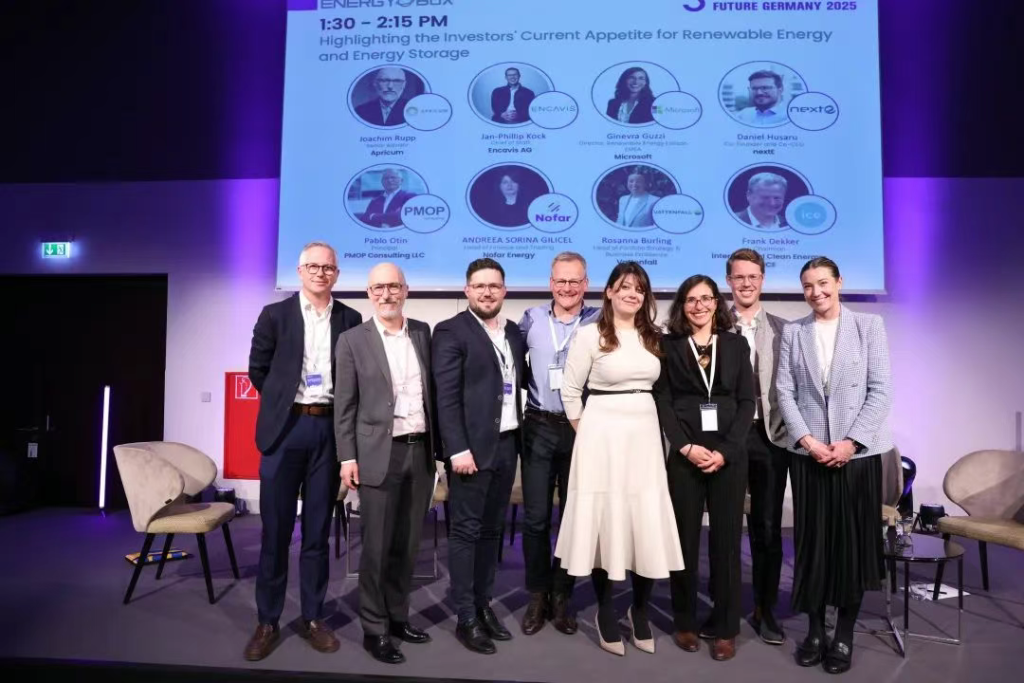
Round-table discussion 5
In the panel presentation “Strategic Solutions: Overcoming Barriers to Energy Storage from Development to Deployment”, experts discussed the key challenges faced by energy storage projects and strategies to address them. Land acquisition and grid access are major bottlenecks in the development of energy storage projects. Experts mentioned that energy storage projects can be accelerated by drawing on the experience of PV and wind power, streamlining the approval process and promoting shared infrastructure development.
In terms of financing, energy storage projects are increasingly relying on models such as long-term power purchase agreements (PPAs) and ancillary service contracts, which provide investors with stable returns and reduce risk. However, bank financing still faces immature models and insufficient policy support.
Finally, experts emphasized that grid policies and tariff mechanisms do not yet adequately reflect the value of energy storage’s flexibility, calling for a push to reform grid management regulations and pricing mechanisms, and a fair assessment of energy storage’s contribution to improving grid stability. Overall, the development of the energy storage industry needs to draw on the experience of other renewable energy sources, while promoting policy innovation to ensure the key role of energy storage in the future energy system.
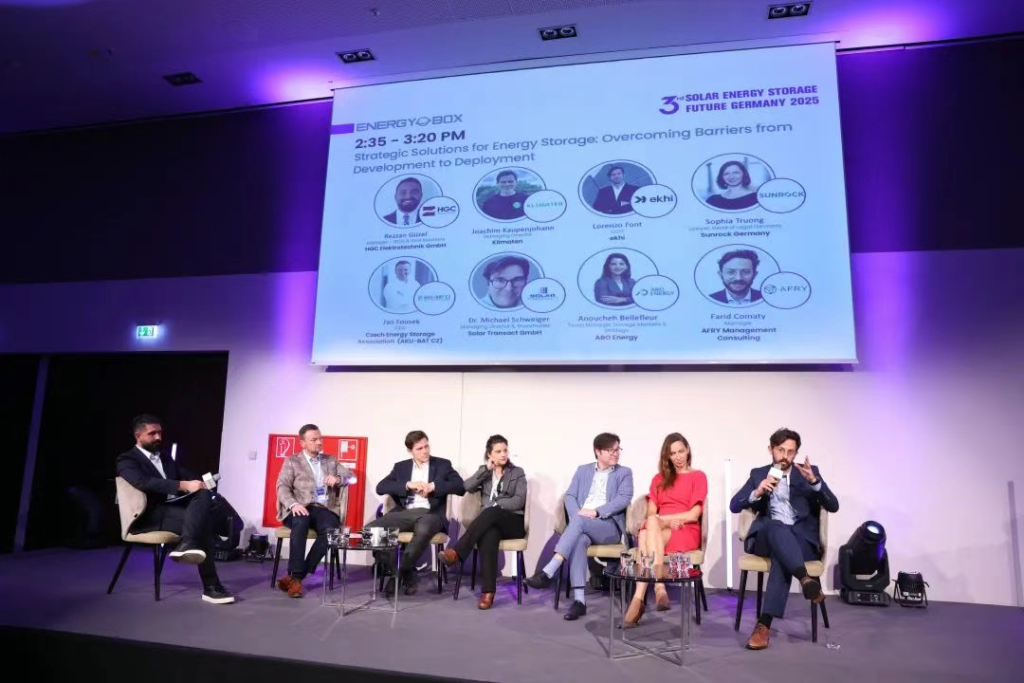
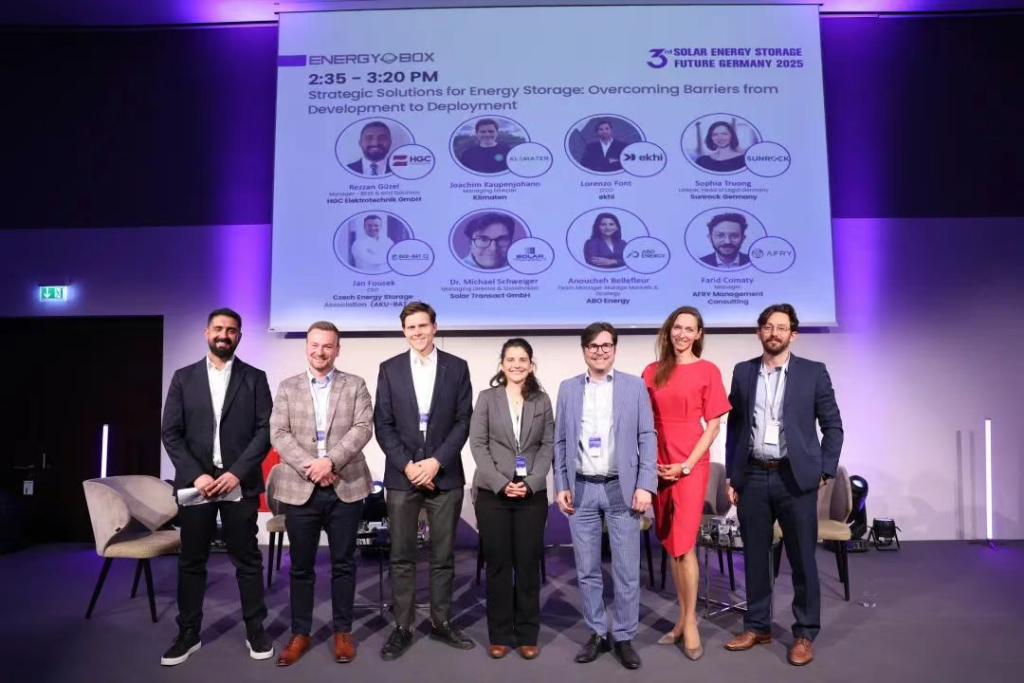
Round-table discussion 6
In the high-level roundtable on “European Energy Transition and Power Structure in the Next Decade”, chief executives from several energy companies discussed in-depth around the integration of photovoltaic storage, grid reform and market mechanism. Guests pointed out that Germany’s 215GW photovoltaic target in 2030, energy storage will be the key support. However, grid access is still the biggest bottleneck, and TenneT has provided new ideas for energy storage access through flexible contracts and dynamic grid sharing in the Netherlands, and explored the feasibility of landing this model in Germany.
With the implementation of Redispatch 2.0, >100kW power plants are included in the dispatch scope, but energy storage lacks a clear position in the compensation mechanism and dispatch rules. Guests believe that in the future, we need to promote a more flexible and decentralized Redispatch 3.0 framework, so that energy storage can be truly integrated into the grid system.
In terms of market mechanism, energy storage is still highly dependent on arbitrage and ancillary services, incentives such as capacity market, CfD, grid fee exemption, etc. still need to be strengthened, and investors are looking forward to a more stable revenue path and policy environment. At the financing level, PPA is replacing FIT as the mainstream, but energy storage projects are still facing “difficult financing” due to the uncertainty of revenue. Guests called for the establishment of a more mature revenue model to enhance bank recognition. In terms of technology trends, used batteries, agricultural photovoltaics and smart energy systems were in the spotlight, while Fraunhofer’s study showed that optical storage systems have already gained a cost advantage, triggering heated discussions about disruptive technologies in the future.
In addition, regional integration in Europe also brings new challenges. The impact of wind power spillover from Denmark on the German power grid, for example, emphasizes the urgent need to strengthen cross-border power coordination mechanisms.
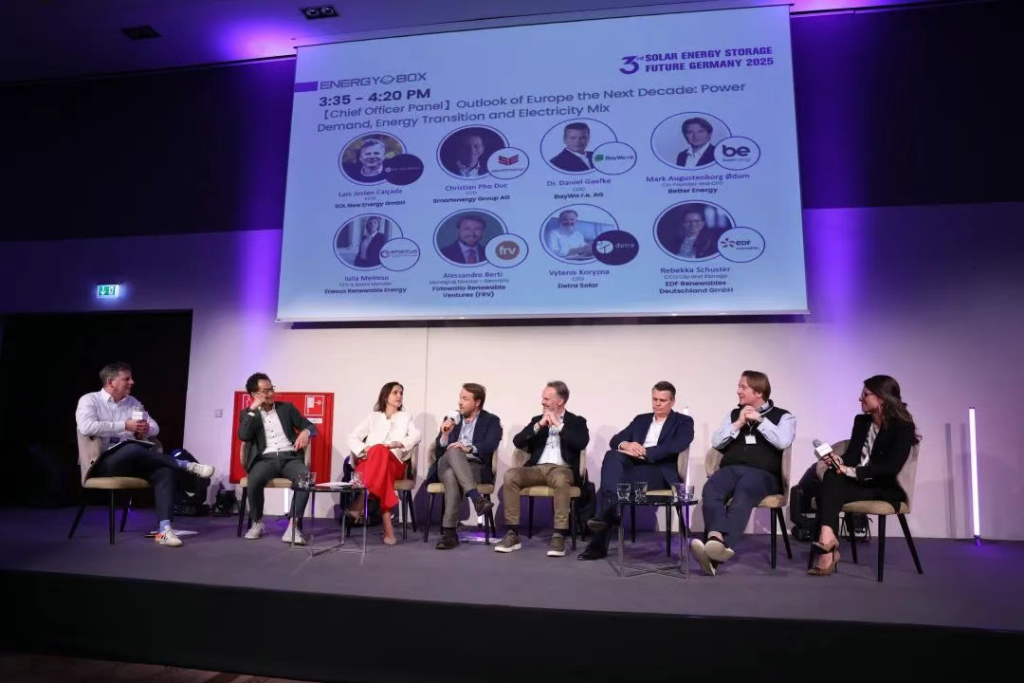
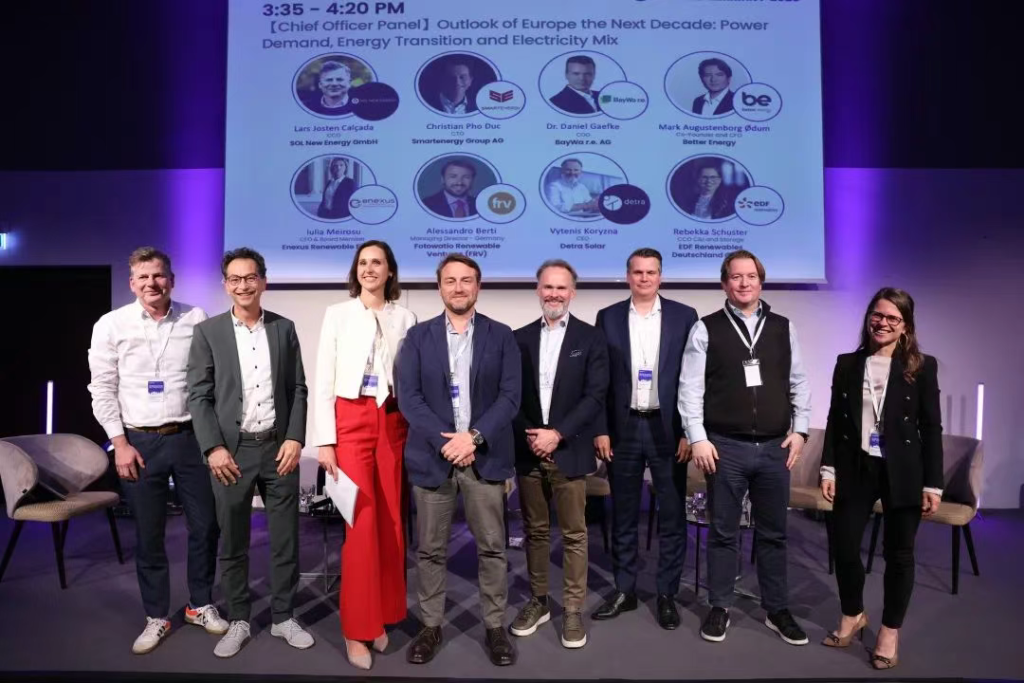
Round-table discussion 7
In the panel discussion “Strategy and Sustainability: Shaping the Future of Rooftop PV and Balcony PV in Europe”, a number of guests from energy suppliers, distributors and integration platforms discussed in-depth policy guidance, market trends, product integration and technological innovations of customer-side PV.
The panelists firstly pointed out that although balcony PV is rapidly emerging in Europe, it is still facing obstacles such as different installation standards, complicated grid connection procedures and insufficient consumer education in the promotion process. In order to achieve larger-scale penetration, it is necessary to promote policy simplification and harmonization of technical specifications.
At the product supply level, SegenSolar and sun.store shared their observations on the current challenges at the distribution end: core products such as modules and inverters may still experience supply fluctuations at certain stages. To help installers respond more effectively to market changes, the channel is accelerating its digital transformation, providing more flexible inventory management and one-stop sourcing platforms, and promoting a shift from reactive to proactive sourcing.
According to Solavita, consumer interest in integrated PV+storage+smart home solutions is rising significantly. Especially in new homes and retrofit projects, users prefer the overall experience of visual management, energy efficiency optimization and automated scheduling. The market is gradually maturing, but the supply chain integration capability is more demanding.
Finally, regarding the application of AI and machine learning, the guests were unanimously optimistic about its potential in the direction of power generation prediction, system diagnosis and household energy management, etc. AI technology is expected to play a greater role in improving the efficiency of the PV system, prolonging the life of the equipment and enhancing the sense of user participation, accelerating the concept of “smart energy” from concept to popularization.
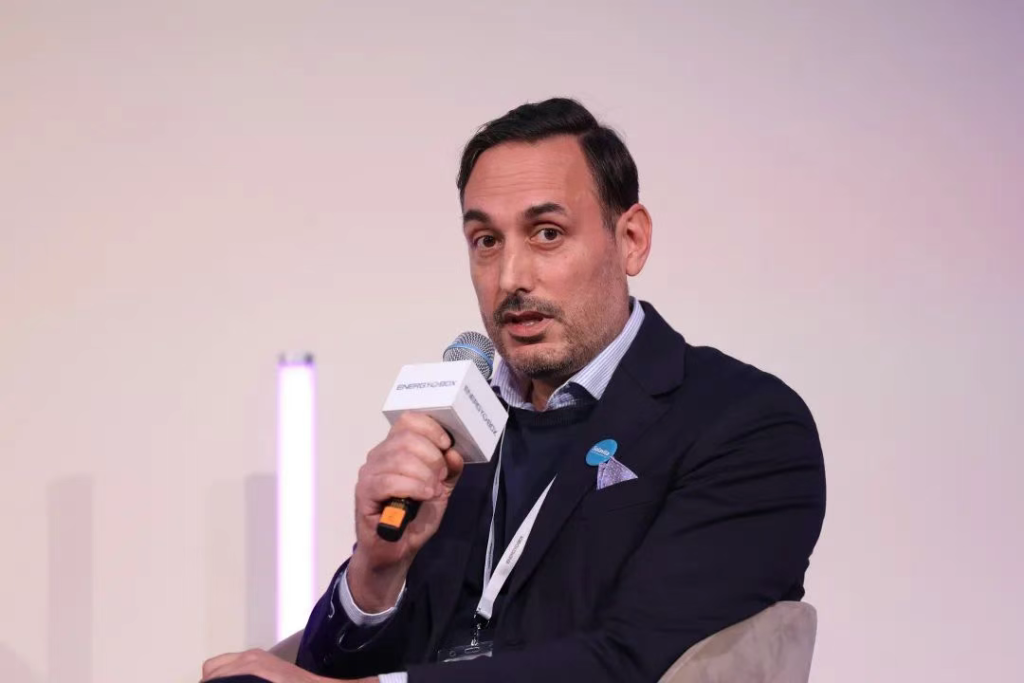
Round-table discussion 8
In the panel discussion titled “Strategic Investment and Energy Storage Project Development: Capturing Value in Evolving Policies and Markets”, representatives of several core companies and investors in the field of energy storage had an in-depth discussion on the current status of the German market, policy environment, regional distribution, business models and future trends.
With regard to the current heat and challenges of the German market, the guests generally agreed that the market is highly enthusiastic about energy storage and has a strong demand for development, but the “buildability” of the project is still limited by the problem of grid access. Several guests pointed out that although Germany has become one of the most attractive energy storage markets in Europe, projects reaching the “Ready-to-Build” stage are still very scarce, and there are even signs of “false heat” in some areas. Grid congestion, unclear tariff signals and policy fragmentation are the main uncertainties in the investment assessment.
When asked “if there was only one policy change that could be made to improve market conditions”, the panelists were divided: some called for the removal of the BKZ restriction, others wanted to improve the licensing process in Bavaria, while others emphasized the extension of the grid fee waiver for the period after 2030 or the promotion of zonal pricing reforms. The panelists agreed that a clear, stable and long-term policy direction is the key to investment confidence.
In addition, in response to forward-looking questions such as “will energy storage revenues decline due to the saturation of ancillary services as in the UK” and “will the innovative auction mechanism be halted”, guests generally agreed that the market mechanism needs to evolve, and that the source of revenues will shift from a single ancillary service to a more complex arbitrage and capacity support transfer mechanism. It was generally agreed that the market mechanism needs to evolve, the revenue source will shift from single ancillary service to more complex arbitrage and capacity support, and the withdrawal of policy support will further test the maturity of the business model.
The whole discussion reflected that although the German energy storage market is hot, the core competitiveness is to “build, earn and retire”. Under the background of uncertain policy, continuous technological evolution, and increasingly prudent capital, whoever is able to perceive the risk, lock the high-quality resources and layout flexibly will stand out in the next five years of energy storage competition.
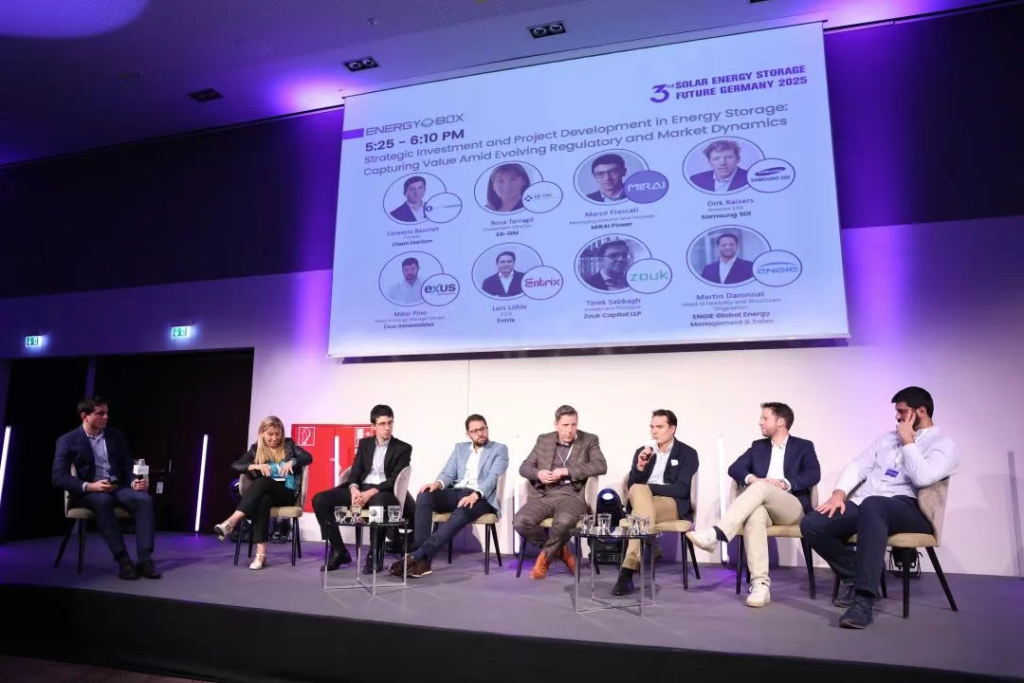
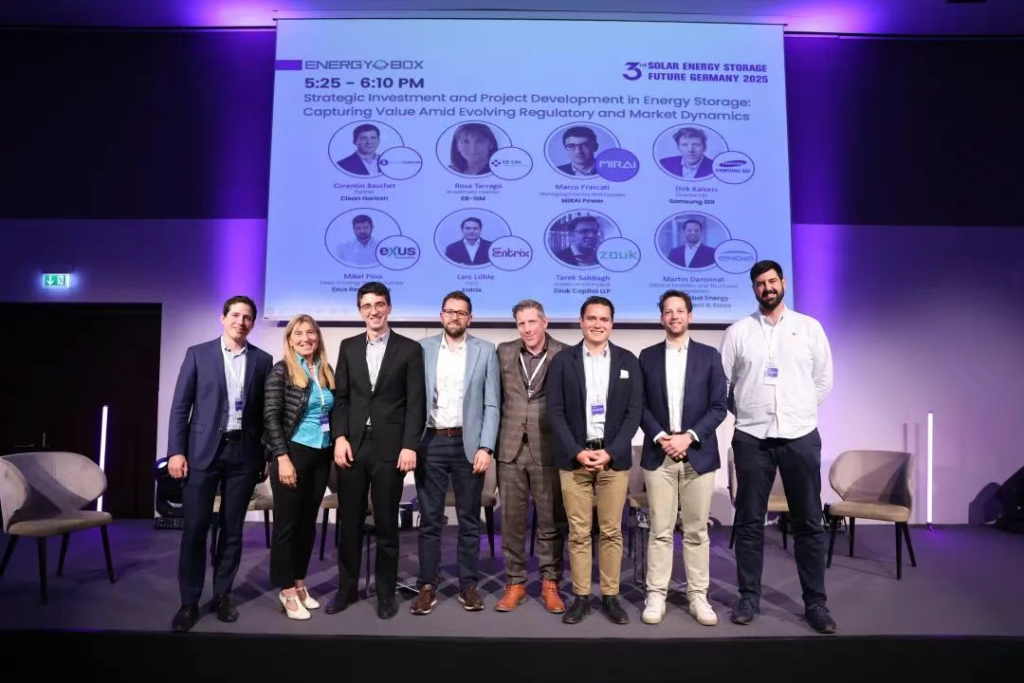
presentation
As the conference winds down, Energy Box recognizes companies and individuals who have made significant contributions to the renewable energy industry at the ceremony. These prestigious awards recognize individuals and companies that have made outstanding contributions to advancing solar energy, energy storage and the green transition.
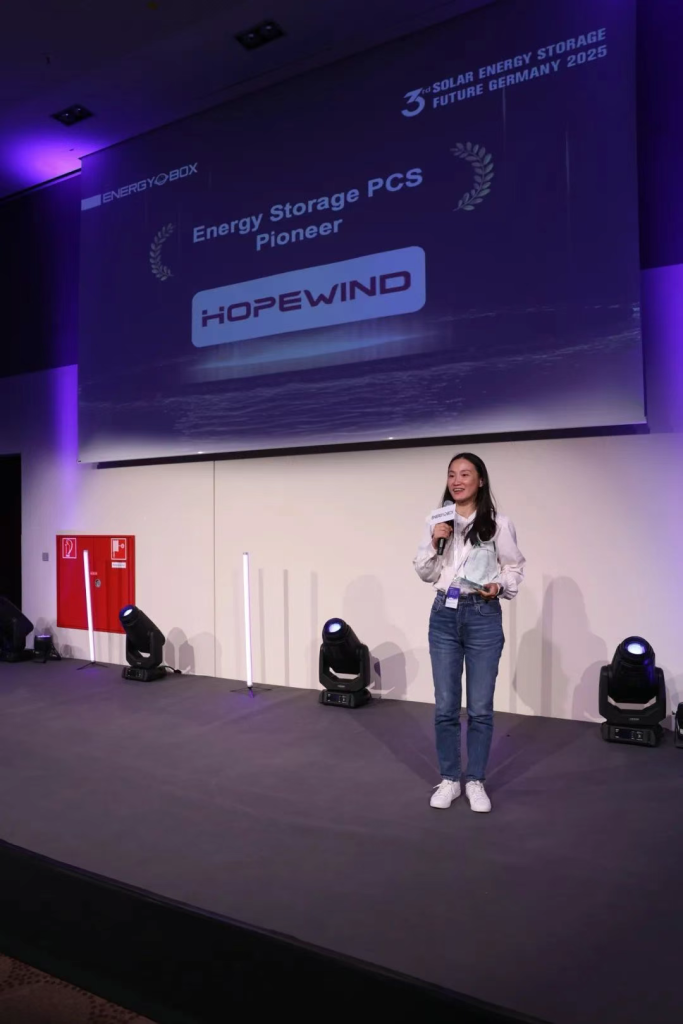
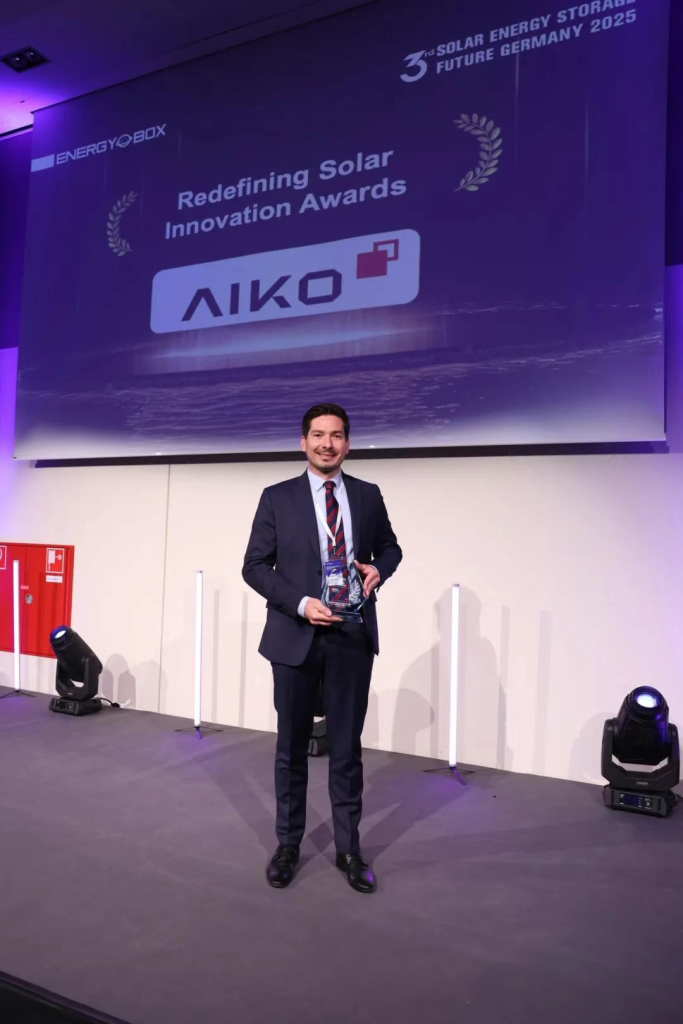
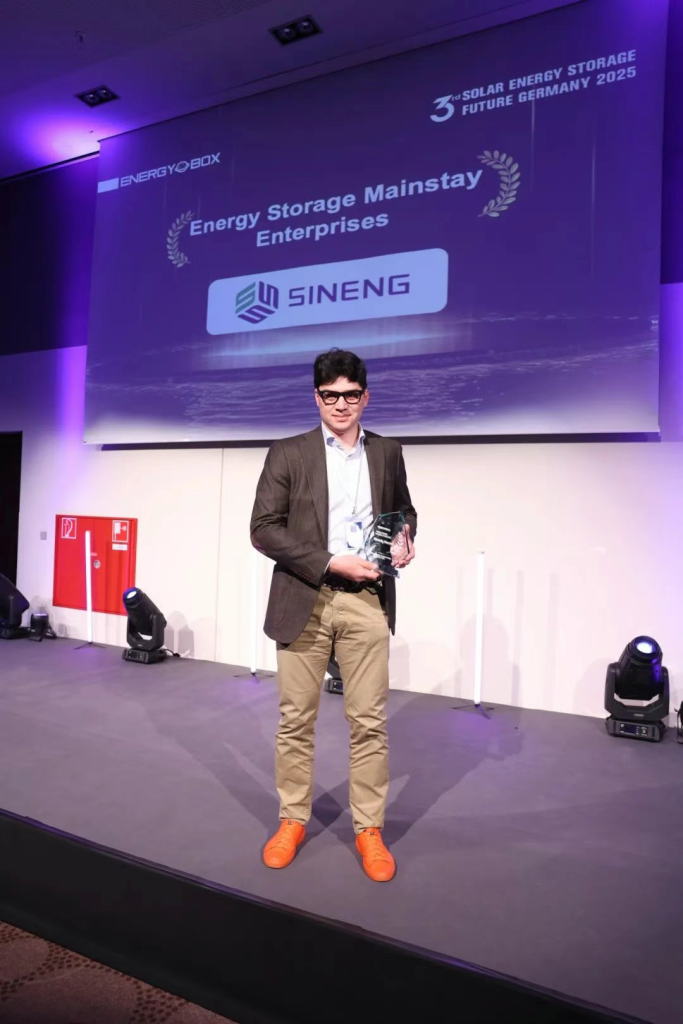
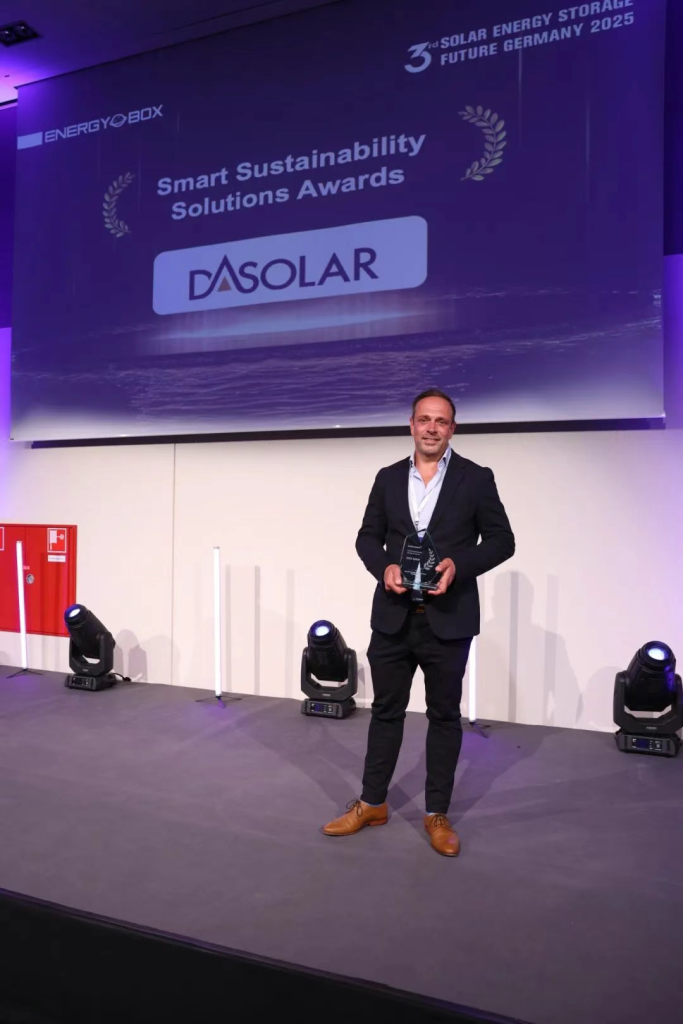
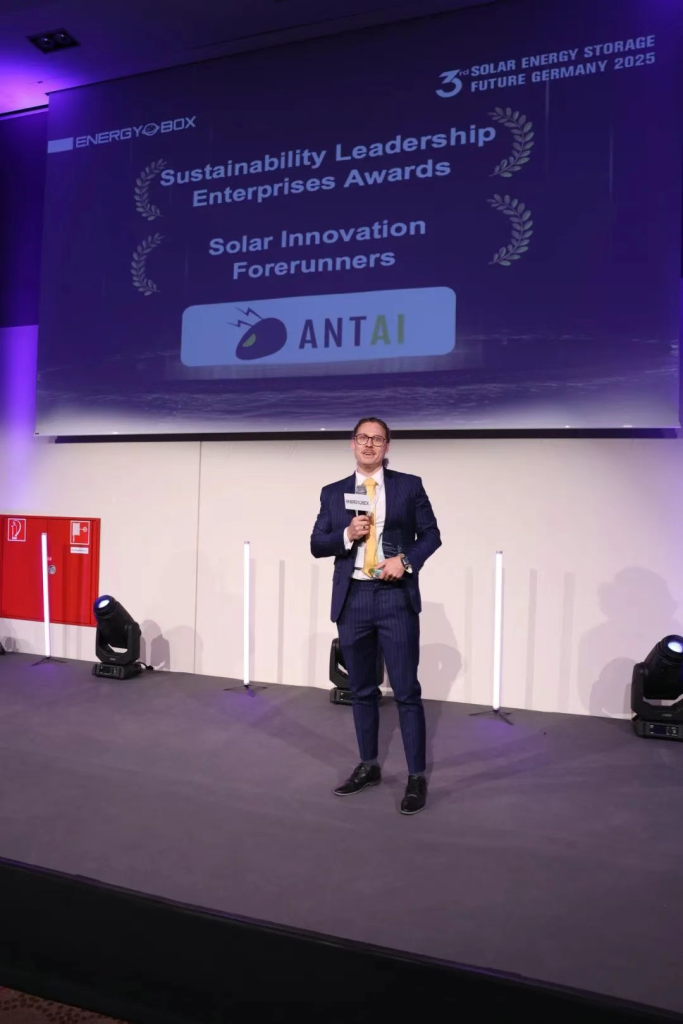
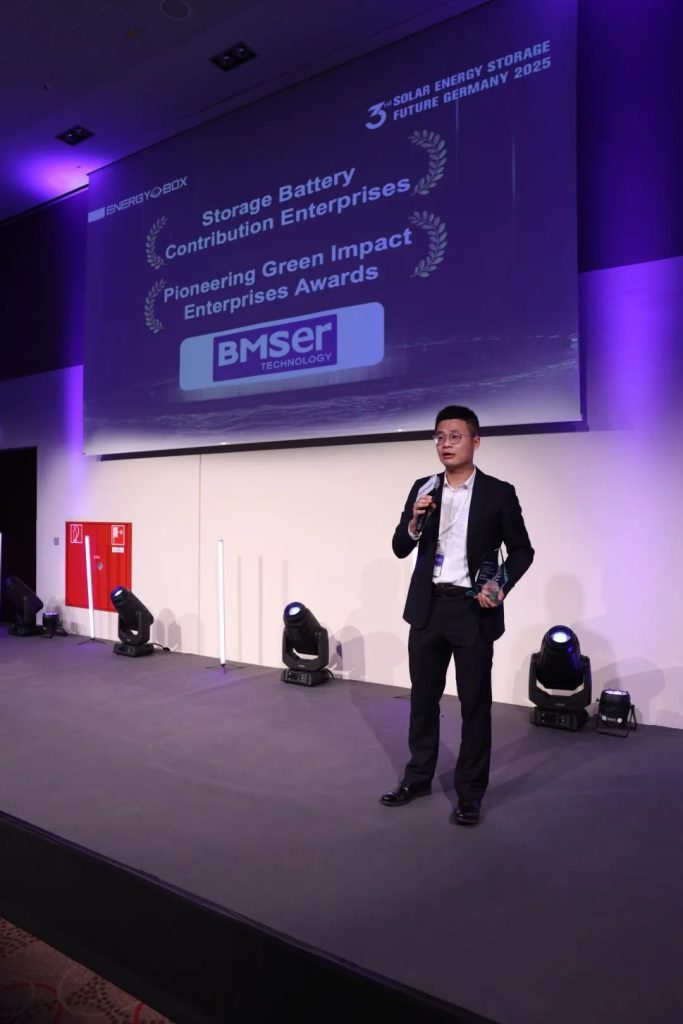
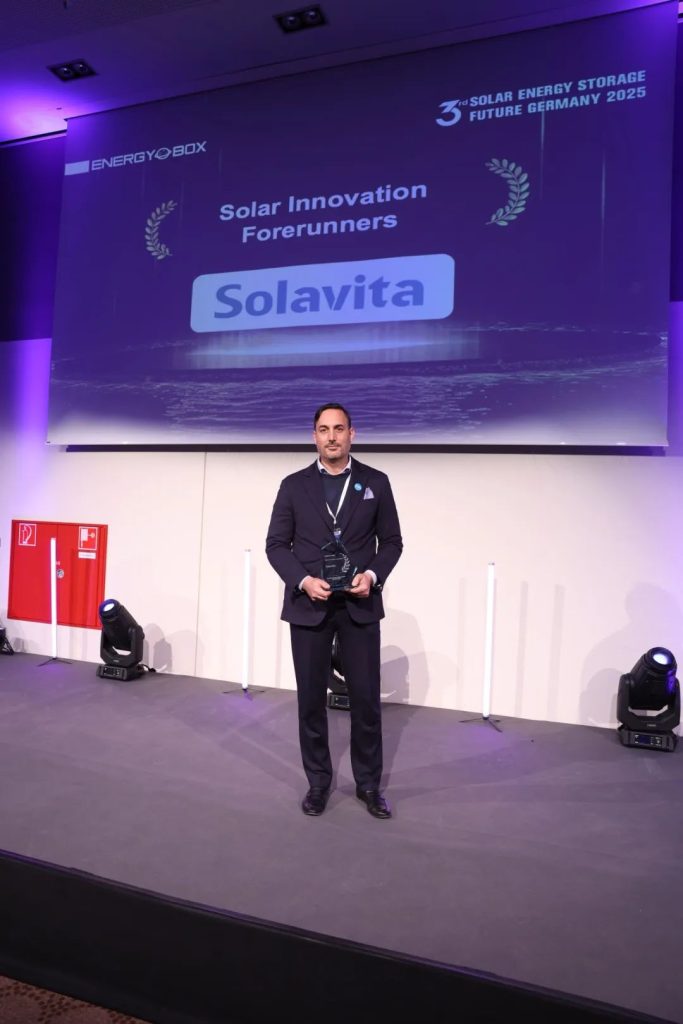
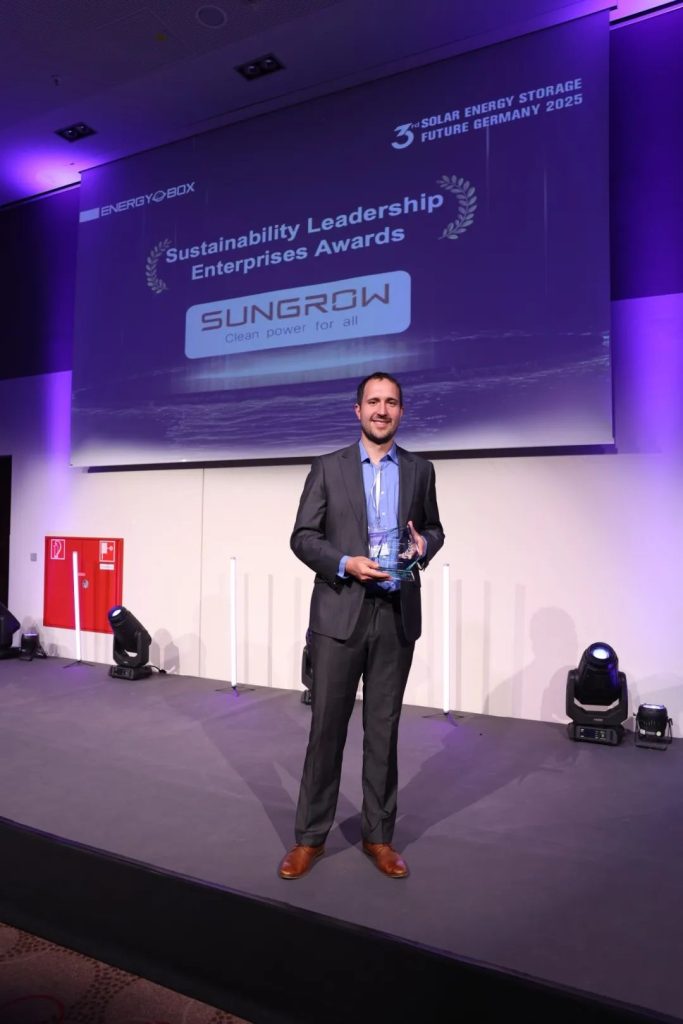
cocktail party
At the end of the forum, the conference successfully transitioned into a cocktail reception. This networking occasion provided a great opportunity for guests to further network and deepen their collaborative intentions. Industry leaders, technologists and innovation pioneers from the solar and energy storage sectors gathered in a relaxed environment to discuss insights, exchange ideas and celebrate the positive progress and future opportunities of the industry.
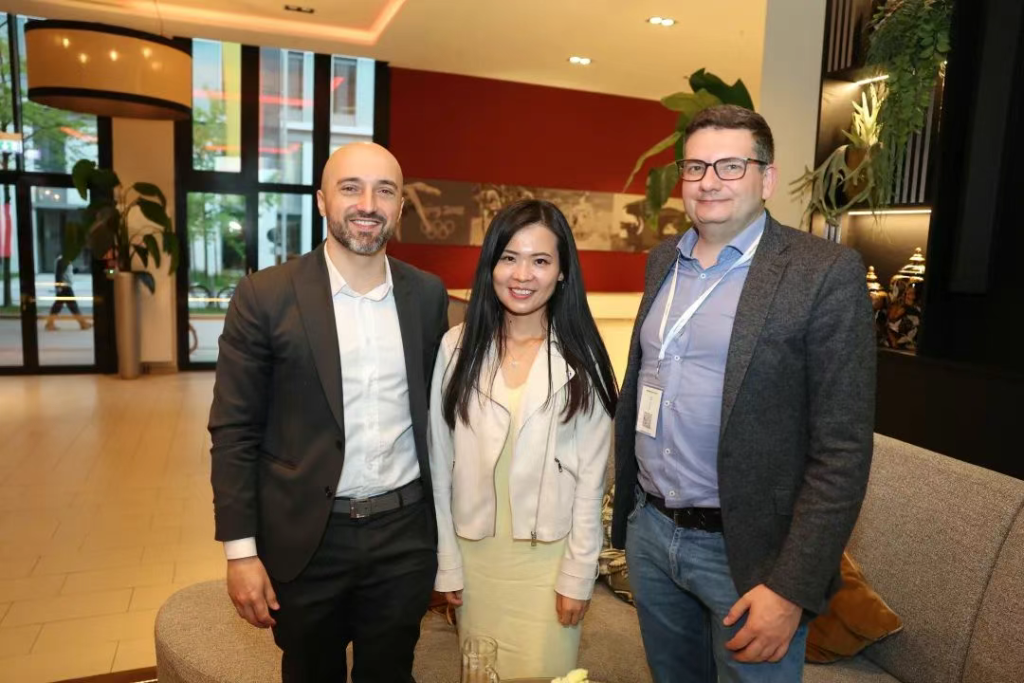
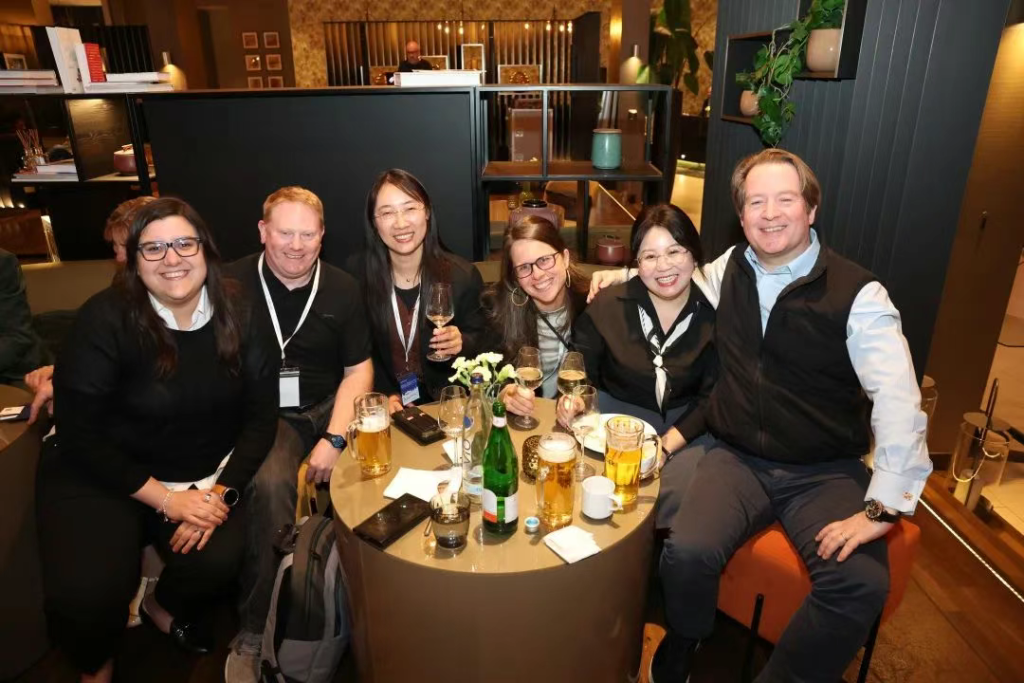

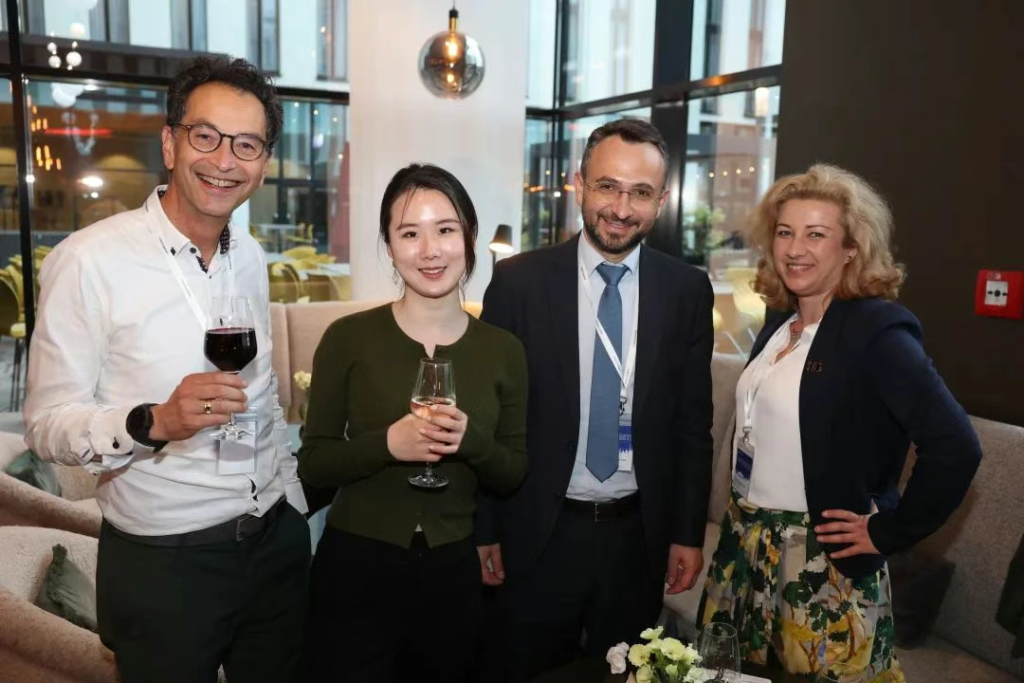
The 3rd International Photovoltaic Energy Storage Conference in Germany has now come to a successful conclusion!


